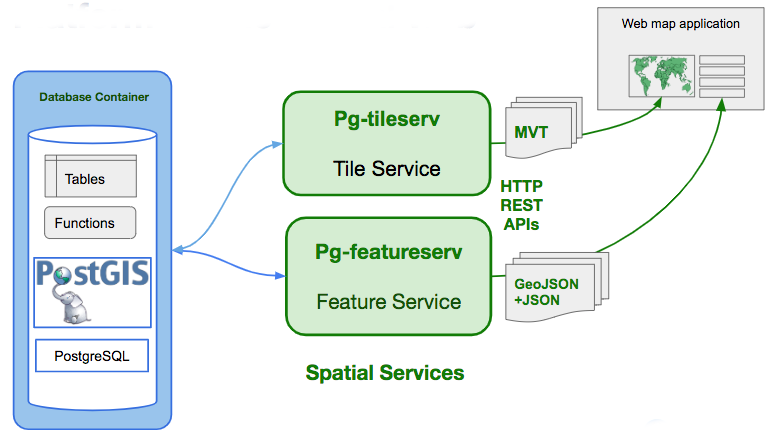Architecture
pg_featureserv’s architecture is simple.
It consists of a single server application, written in Go.
It is configured via static (read-only) information sourced from a file, the command line and/or environment variables.
pg_featureserv can run stand-alone or inside a containerized environment.
It connects to a Postgres database using an internal database pool
(which can itself connect to a database load-balancer such as pgbouncer).
It comes with an integrated web server which provides the HTTP interface to clients.
The interface provides both a data-centric REST API and a HTML-based user interface.
In other words, the service integrates with the following:
- A PostGIS-enabled Postgres database instance or cluster, containing the data being served and the catalog metadata describing the data.
- Client software which accesses the HTTP interface. Typically this is a web-mapping application running in a web browser, but it could also be a non-browser application (ranging from a simple data access utility such as
curlorOGR, to a desktop GIS application such as QGIS), or a web proxy mediating access to the service.
The context diagram below shows pg_featureserv running alongside pg_tileserv to provide a PostGIS-centric “platform for the spatial web”.
